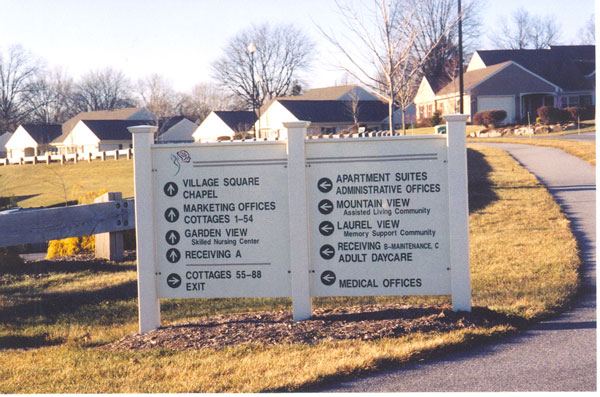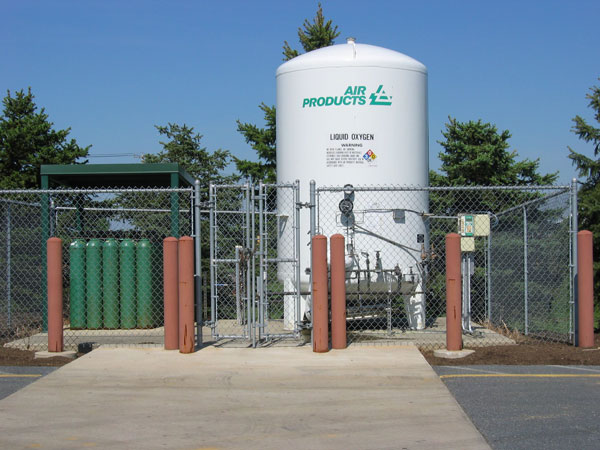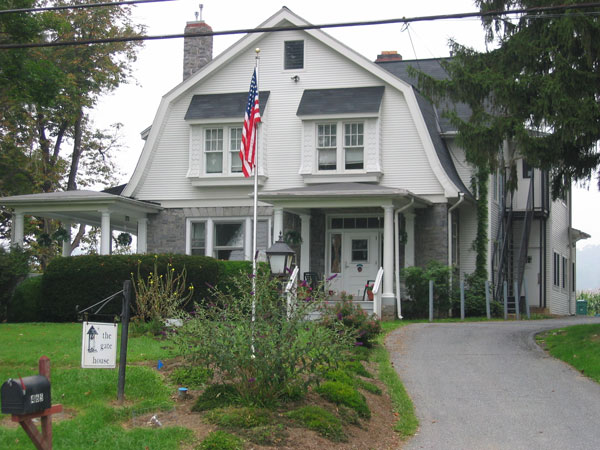
By Eric G. Bachman
According to the Center for Disease Control and Prevention, the average life expectancy in 2014 was estimated to be 78.8 years. In 1990, it was 72.7 years. Living long does not always mean in good health: Mental and physical abilities deteriorate, and disease and other ailments may necessitate admission to a special care facility to provide essential needs for those who cannot care for themselves.
Special care facilities of all sizes and services are expanding. Some are brand-new facilities with state-of-the-art systems. Others have occupied buildings not originally designed for the use. Regardless if the facility is a large special care corporation or a small mom-and-pop operation, the fire department must be aware of these facilities and understand the challenges that these facilities present. Fire officials must work closely with facility personnel to better prepare themselves for this growing hazard.
Facility Types
National Fire Protection Association (NFPA) Standard 101, Life Safety Code, defines occupancy classifications and includes three categories specific to health and special care facilities. One is a Health Care Occupancy (HCO), which essentially is for long-term care such as a nursing home. A second category is Ambulatory Health Care Occupancy (AHCO), which most would understand as a hospital or out-patient type setting. And the third is a Residential Board and Care Occupancy (RBCO), which makes one think of a group home. By the generic example assimilations for each category listed, it’s likely that a local example comes to mind. Not all are created equal, and although some generalizations may be made for type of care exhibited and perhaps the age of clientele, nothing replaces physically assessing the hazard and challenges of each facility.
RELATED TRAINING: Fire Operations at Senior Living Facilities | Evacuating a Senior Living Center: What Does It Really Take? | At the Intersection of EMS and Hospice Care
The AHCO or hospital category is not the focus of this article, even though similar issues and considerations apply. And the purpose of this article is not to review specific NFPA 101 code standards, but rather to reveal emergency response considerations centric to HCO and RBCO sites.
Regardless of how you refer to these facility types, you must know where these facilities are located in your community. Some may not be readily advertised or adequately signed, whereas others may be well known. It is essential to understand and identify the challenges these facilities present to the fire department’s abilities before an emergency. Establishing a close working relationship with these facilities will contribute to more effective and efficient emergency operations.
A Growing Hazard
The market for these facilities is constantly increasing. Some are “full-service” retirement and personal care facilities with wide-ranging services, from independent living to 24-hour care and treatment facilities. These full-service facilities are also known as Continuing Care Retirement Community (CCRC) (See Photo 1). A CCRC allows occupants to reside in a setting respective to their changing health needs. As their health deteriorates, they will be cared for in the appropriate facilities without having to seek a new facility. A person may live in an independent living section of a full-service HCO. If their health deteriorates or specific needs increase, they can receive the appropriate care without having to move to another venue. This can only mean a greater demand for these services no matter if it is a HCO or RBCO or a combination of services.

Photo 1: Sign of a CCRC illustrates the various services based upon health condition.
According to the U.S. Department of Health and Human Services, in 2002 there were more than 288 million citizens in the United States. Of that figure, more than 26 million residents were between the ages of 55-64. Another 18 million were 65-74; 12 million were 75-84; and 4.5 million were over the age of 85. Not all of these citizens, of course, will need admittance to a special care facility. However, as our communities grow combined with longer life expectancy, the need for these facilities will increase dramatically. By the year 2025, the U.S. Census Bureau projects the population of the United State to exceed 330 million. Twenty years from now, a percentage of the 89 million Americans currently in the 35-54 age range will need special care. With more future citizens and an ever-increasing live-expectancy, how will this influence future personal care needs as well as the number of and size of HCOs?
History
No matter how big or small the facility, the fire department must be prepared. Deadly incidents have occurred at these occupancies and fire officials must improve their intelligence. In October 1989, a fire occurred at a Virginia nursing home, killing 12 residents. Those killed ranged from ages 65-92. The four-story complex housed 161 residents. At the time of the incident there were 28 staff personnel on site (a ratio of nearly six to one). The incident taxed the local emergency services as more than 130 emergency personnel were involved and 34 medical transport units were needed to transport injured and evacuated residents.
In March 1991, 10 residents died as a result of a fire at a single-story Colorado personal care boarding facility. Those killed ranged in ages from 77-97. According to autopsy reports, all died as a result of carbon monoxide. The facility was occupied by 25 residents. Two staff personnel were on duty at the time of the fire (a ratio of 12.5 to one).
Although the incidents listed above occurred more than 20 years ago, tragedies with similar results continue. In February 2003, 10 residents were killed in a Connecticut nursing home fire. In September 2003, a Tennessee nursing home fire resulted in eight resident deaths. And again in January 2004, another Tennessee nursing home fire killed three residents.
For each incident there were many differences in the disposition of each facility, including building height, number of residents, and number of staff. When comparing the incidents, there are also several commonalities, including limited initial fire department resources and lack of preincident preparedness coordination efforts with the facility. There are many facets to understand and address before you respond to an incident at a HCO or RBCO.
Resident Categories
One of the first things that fire officials must understand is the elements and service components that the facility provides. This will vary as some provide limited care options whereas others include several alternatives. One common arrangement is independent living, residential units for people that can function with minimal or no assistance. This residential unit will vary from a single-residence structure. This can also be referred to as congregate housing, which includes supportive services such as meals, housekeeping, and transportation.
A second arrangement is assisted living (Photo 2). Here, the resident is capable of many daily routines but needs assistance with certain aspects such as bathing, dressing, and medication management. The services provided are dependent upon the individual and can also involve assistance with eating, toileting, and laundry.

Photo 2: An assisted living facility that provides personal care.
A third residential component is skilled care, where 24-hour monitoring and care of residents is facilitated. These individuals are incapable of self-preservation because of their physical or mental circumstances.
Within these facilities there may be special sections dedicated to monitoring, protecting and treating residents with special conditions such as dementia, a brain dysfunction that inhibits a person’s abilities to perform daily activities, or Alzheimer’s, whose victims may exhibit forgetfulness, language problems, impaired judgment, mood swings, and personality changes. Because of the volatility of these residents, they are often housed in secured areas. Access to and from these areas must be understood, not only for the protection of the residents but for emergency responders as well. Proper handling of dementia residents during an emergency requires comprehensive preincident coordination between facility management and fire officials. These residents may be unstable. Certain triggers, unbeknownst to emergency workers, may cause a resident to react defiantly, resulting in harm to the resident and the emergency worker.
Because of their mental instability, you cannot just shepherd these residents outside and assume they will stage. They must be constantly observed, monitored, and protected. How are you going to do that? How is the facility, with limited staffing, going to account for these individuals during an evacuation? If you don’t know now, you won’t know when there is an emergency. Now it the time to determine courses of action to address the accountability and care of the residents outside of the facility.
Additionally similar facilities may be called adult communities, continuing care retirement communities, sub-acute care facilities, rehabilitation centers, home care residences, hospice, day care, behavior care, and physician care institutions. Regardless, preincident intelligence is a must.
Access
How accessible is the facility, both for fire apparatus and emergency personnel? Like any other extraordinary hazard, limited access can significantly hamper efforts. If not understood before an incident occurs, initial operations will be delayed and life safety of the residents will be compromised. You must also understand internal access issues, and secured areas must be identified and addressed beforehand with facility management and firefighters. Understanding how to get in and out of a secured area is essential.
The arrangement of these facilities will vary, although they are usually compartmentalized. Some may be multi-level while others one- or two- stories with expansive wings.
Detection and Suppression Systems
Fire officials must understand the protection mediums that are or are not in place and understand how they will affect operations. Realizing how alarm systems are zoned is also important. What areas are or are not monitored? The same concern should be given to sprinkler systems. At the September 2003 Tennessee nursing home fire previously mentioned, the only sprinkler medium present was for the kitchen grill. If fire department connections (FDC) are installed, be cognizant of what it supports.
Special Hazards
Oxygen is one of the most common hazards in the health care industry. Understanding oxygen therapy mediums is important. Are residents provided oxygen by portable cylinders, bulk storage (Photo 3), or is there a prepiped system? Portable oxygen cylinders present an ubiquitous hazard. They can and are located anywhere and everywhere, and virtually any room in the building may have oxygen cylinders. Storage rooms, resident rooms, and even hallways are venues for the fluid storage of oxygen cylinders. There have been documented cases where the cause of a HCO fire was because of a resident smoking and the oxygen delivery system contributed to the fire. While portable cylinders are common, some facilities may have prepiped systems. Be aware that this oxygen-delivery medium is present in facilities you cover, and know where the shutoffs are located.

Photo 3: Bulk container of liquid oxygen at a health care facility.
It’s critical to understand other utility shutoff locations and be aware of back-up power mechanisms. What area(s) does the shutoff control and for what systems do they support? Identify utility controls and their support. Are controls in place to isolate an area, or does it support systems for the entire building?
Construction
As with any target hazard, understanding the construction type is important in assessing its reaction under fire conditions. Was the building originally intended for use as a health or special care facility? Often, homes are transformed into board and care/group home occupancies. Photo 4 is of an RBCO, which was originally a single-family dwelling. The facility has undergone several expansions to accommodate additional residents. What renovations or improvements were made and how does it affect the construction classification? The January 2004 Tennessee incident occurred in a converted one-floor house that housed 15 residents.

Photo 4: A residential board and care facility that originally was a single family dwelling.
Facility Practices
An important aspect that needs to be analyzed is the facility’s practices for emergencies. From staffing to resources to emergency plans, these items need to be reviewed, understood, and addressed prior to an incident. These aspects will play a vital role in your operations as well as set the stage for what you encounter. Things that start badly usually end badly. If you do not understand the facility before the incident happens, it will start–and most likely end–badly.
Like in most industries, employers try to do more with less. Staffing at special care facilities is no different. Understand the staffing at all times of the day and night of these facilities. How effective will the staff be in protecting residents? At the time of the January 2004 Tennessee incident, there was only one staff member on duty, and this visitor was responsible for 15 people, not to mention the visitors that were on site. Limited staffing plus limited fire resources will compromise the protection of the residents.
Resource availability is another important aspect to consider. This includes facility and emergency service resources. If an evacuation is necessary, where do we place the residents? You just cannot put them outside. Extreme weather conditions should be considered. Where is an alternate site to house them? How do we get them there? These are important issues to address and plan for in advance. On the emergency service side, what resources are readily available? In the 1989 Virginia incident reviewed earlier, 34 ambulances were used to transport residents to area hospitals and other sites. Thirty-four ambulances are not available everywhere. Where would you have to pull resources from? At what depth are your resources listed? How long would it take the resources to arrive?
A third aspect of facility practices is an understanding of the internal plans for after discovery of a fire or other emergency and notification to the fire department or 911 center. What steps are taken prior to fire department notification, especially if the facility has no monitored fire alarm system or if it is monitored locally? What protective actions are supposed to be employed? At one facility, the staff is to first close all patient doors, evacuate residents close to the room of origin and then call the fire department. Depending on the scenario, the staffing and the size of the facility, what can the fire department expect to find upon arrival? Potentially, a well-progressed fire. If the fire department‘s initial assignment has limited staffing, this has the makings of a tragedy.
Postincident Critique
The importance of reviewing case studies and working with facility management beforehand cannot be over-stressed. We must also critique our incidents to determine what went right, what went wrong, and how to improve ourselves for future incidents.
PreIncident Coordination
Efforts to prepare for an incident at an HCO or RBCO should involve mutual aid departments. These organizations need to be prepared for emergencies at these facilities as well. The resources necessary to effectively and efficiently manage an incident at a special care facility will be great. Most departments will not be able to single-handedly manage an incident (resource-wise). Mutual aid will be necessary, and organizations that have not been involved in your preparedness efforts may hamper or compromise your efforts.
Preincident preparedness efforts require the sustained involvement,and participation of facility personnel. From the executive officer to the medical staff to the building engineer or maintenance manager, they all will be critical resources to liaise with during an incident. Face-to-face preincident coordination is necessary to promote a good working relationship during an incident. Facility personnel, their resources, and coordination activities must be identified prior to an incident. These individuals must be trained and involved in fire department command and control operations before an incident. This will directly influence the effectiveness of a unified command structure.
*
The above list of considerations is not all-encompassing, as local conditions, situations or circumstances may be unique. Fire officials must get into special care facilities and improve their intelligence of facility characteristics and fire department limitations. Key case study issues related to special care incidents have been well-documented and should be studied to avoid similar negative situational reoccurrences. If you are not constantly trying to improve your ability to respond, you are providing a great disservice to not only the facilities you protect, but your firefighters, as well. Although you cannot control many things outside of your fire department, you can control being better prepared.
ERIC G. BACHMAN, CFPS, is a 33-year veteran of the fire service and a former chief of the Eden Volunteer Fire/Rescue Department in Lancaster County, Pennsylvania. He is the hazardous materials administrator for the County of Lancaster Emergency Management Agency and serves on the Local Emergency Planning Committee of Lancaster County. He is registered with the National Board on Fire Service Professional Qualifications as a fire officer IV, fire instructor III, hazardous materials technician, and hazardous materials incident commander. He has an associate degree in fire science and earned professional certification in emergency management through the state of Pennsylvania. He is also a volunteer firefighter with the West Hempfield (PA) Fire & Rescue Company.

